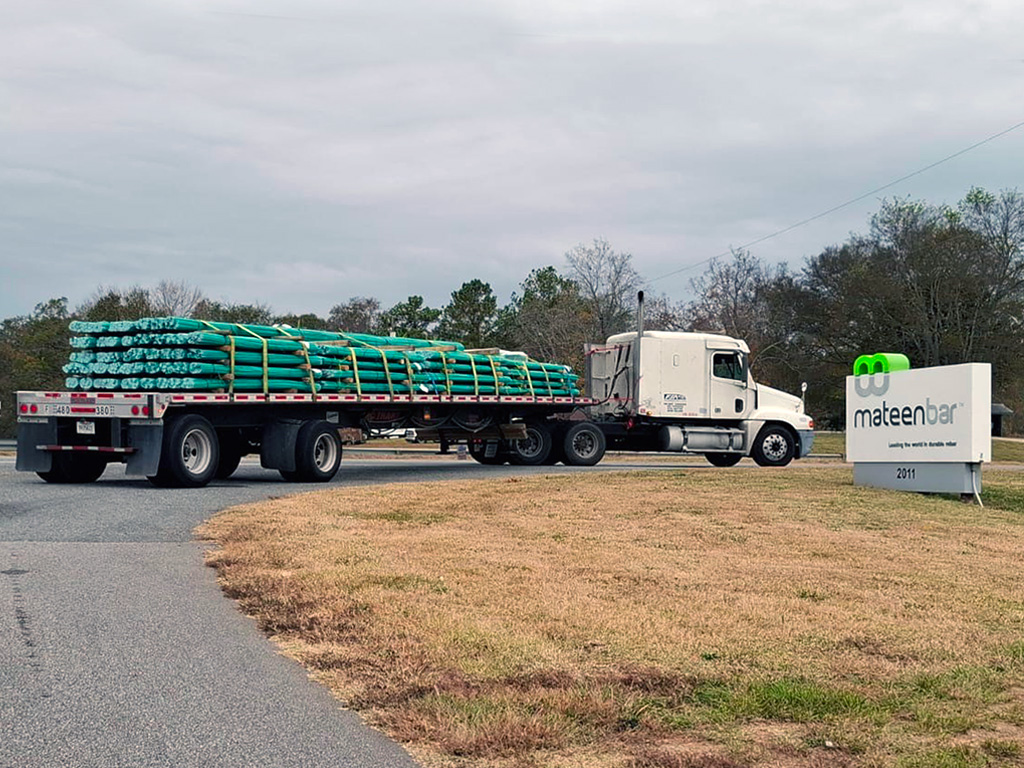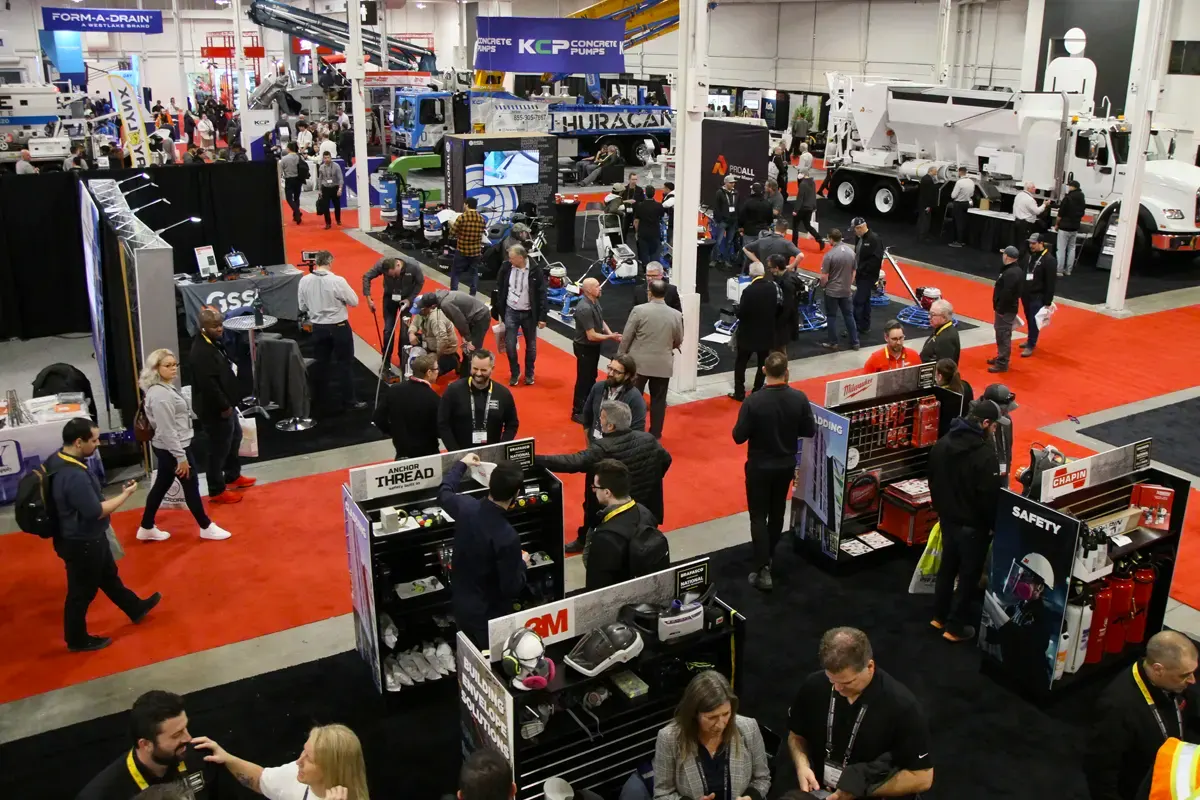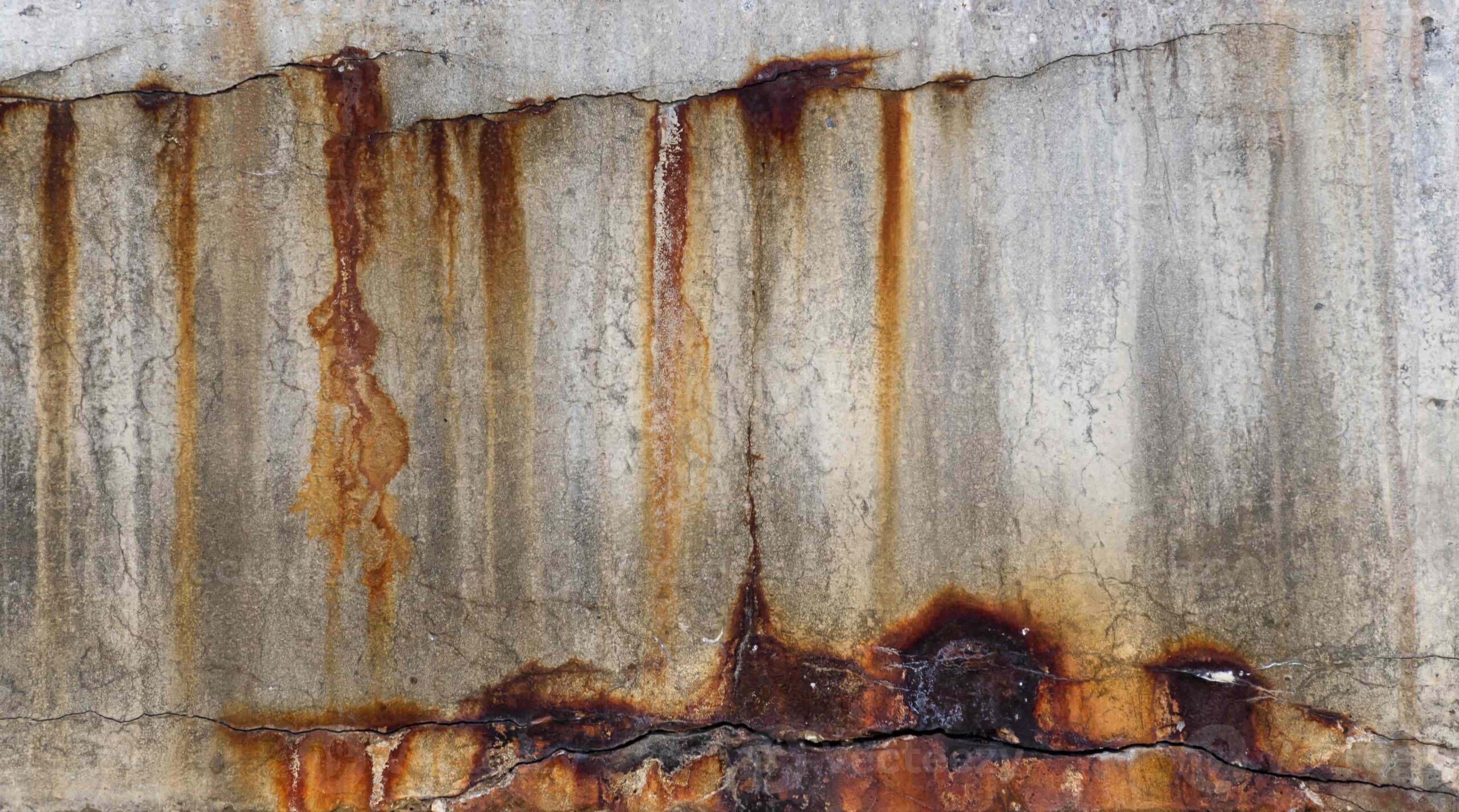
Corrosion in Concrete Infrastructure: The Hidden Threat That Can No Longer Be Ignored
Why rebar corrosion is costing us more than we realize—and how GFRP rebar changes the equation.
Concrete may be the most widely used construction material in the world—but without the right reinforcement, it’s vulnerable to a costly and dangerous enemy: corrosion.
For decades, steel rebar has been the standard. But steel rusts, and when it corrodes, it expands, causing the surrounding concrete to crack, spall, and ultimately fail.
Across the United States and beyond, the result is billions in repair costs, shortened service life, and, in many cases, compromised safety.
According to a report by NACE International, the direct cost of corrosion in the United States is $276 billion per year ($1,400 per person per year) – approximately 3.1% of the nation’s Gross Domestic Product (GDP).
This is more than a materials issue. It’s an infrastructure crisis.
Banner image courtesy of WITEKLAB.
Corrosion of Rebar in Concrete: A Silent, Systemic Problem
Once corrosion begins, it’s only a matter of time before the structural integrity of the concrete is affected. Chlorides from de-icing salts, coastal exposure, and even humidity can penetrate concrete and reach embedded steel, triggering rust.
The effects?
✓ Loss of bond between steel and concrete
✓ Expansion that causes cracking and delamination
✓ Accelerated degradation in high-chloride and moisture-prone environments
✓ Increased inspection, repair, and lifecycle maintenance costs
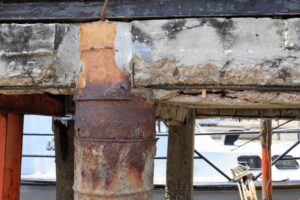
Photo courtesy of Shutterstock.
From parking garages and bridge decks to tunnels, seawalls, and water treatment facilities, corrosion is the common denominator behind premature failure.
Also included in this family of failing structures are driveways, patios, pools and other residential and light commercial applications.
What If Concrete Reinforcement Didn’t Corrode?
That’s where GFRP (Glass Fiber Reinforced Polymer), comes in. Unlike steel, fiberglass rebar does not corrode.
It resists moisture, chemicals, chlorides, and electrochemical reactions—making it a true long-term solution for concrete durability.
At Mateenbar®, we manufacture two GFRP rebar lines:
- Mateenbar60™ for large-scale infrastructure and DOT applications
- Greenbar2X™ for residential and light commercial applications
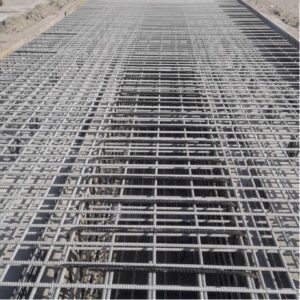
Mateenbar60™
Both are:
✓ 100% corrosion-free
✓ Manufactured in the USA
✓ Supported by ASTM, ACI, and AASHTO specifications
✓ Eligible for Buy America and BABA-compliant projects
And unlike steel rebar, GFRP offers higher tensile strength per weight. Mateenbar® products are designed to meet or exceed performance specifications with a lighter, easier-to-handle, and more durable solution.
Not Just Big Projects—Corrosion Impacts Residential Work Too
Corrosion in concrete structures doesn’t just threaten large public works.
It affects residential and light commercial structures too—like driveways, foundations, patios, and retaining walls.
Many homeowners, contractors, and DIY builders are unaware that concrete can fail from the inside out, simply because of rusting steel rebar.
The problem may not be visible right away—but over time, the corrosion of steel reinforcement in concrete leads to cracking, spalling, and costly repairs, even in smaller-scale projects.
That’s why we created Greenbar2X™, our GFRP rebar solution designed specifically for residential and light commercial markets.
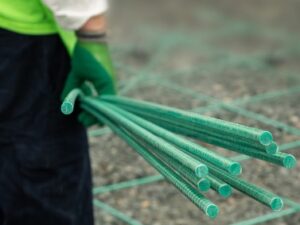
Greenbar2X™
It offers the same corrosion-free advantage in a lighter, easier-to-handle form, making it ideal for contractors and DIYers who want to build with confidence—and durability—in mind.
Why Rebar Corrosion Matters for DOTs and Public Infrastructure
State and federal transportation agencies (DOTs) are increasingly focused on long-term value.
The challenge? Corrosion-related maintenance drains budgets, delays service and shortens the life of critical infrastructure.
With over 45% of U.S. bridges past their design life—and more than 220,000 in need of repair or replacement—the pressure to build smarter is mounting.
The recently released 2025 Report Card for America’s Infrastructure, published by the American Society of Civil Engineers (ASCE), highlights the ongoing deterioration of U.S. bridges—many of which are approaching or exceeding their intended service life. Corrosion is a major contributor.
We’re entering a new era of infrastructure investment; one where lower lifecycle costs are recognized as a better ROI for infrastructure owners. If we don’t rethink the materials we’re using, we risk repeating the same mistakes.
The industry mindset is shifting.
Engineers, agencies, and contractors are exploring smarter reinforcement strategies—and many are turning to GFRP to extend service life, reduce maintenance cycles, and improve long-term safety.
A recent example includes the Harkers Island Bridge Replacement Project in North Carolina—constructed using Mateenbar® GFRP rebar—which was recently honored with a 2025 PCI Design Award.
It is the longest bridge in the world ever built without any steel reinforcement, instead using GFRP rebar to eliminate corrosion risk and extend design life in a coastal environment.
Projects like this prove that the future of reinforced concrete doesn’t have to include corrosion.
The Time to Act on Corrosion Is Now
Corrosion doesn’t just cost—it’s a design flaw.
The longer we accept it as “normal,” the more we pay in repairs, risk, and lost performance.
The good news? There’s a better way forward.
Mateenbar® GFRP corrosion-resistant rebar is proven to entirely eliminate rust while delivering higher tensile strength, longer service life, and significant performance advantages across residential, commercial, and infrastructure projects.
From everyday foundations to award-winning bridges, we’re proud to help lead this change toward corrosion-free reinforcement.
✓ Explore how GFRP compares to steel
✓ View technical data & approvals
It’s time to stop fixing corrosion—and start designing it out.

